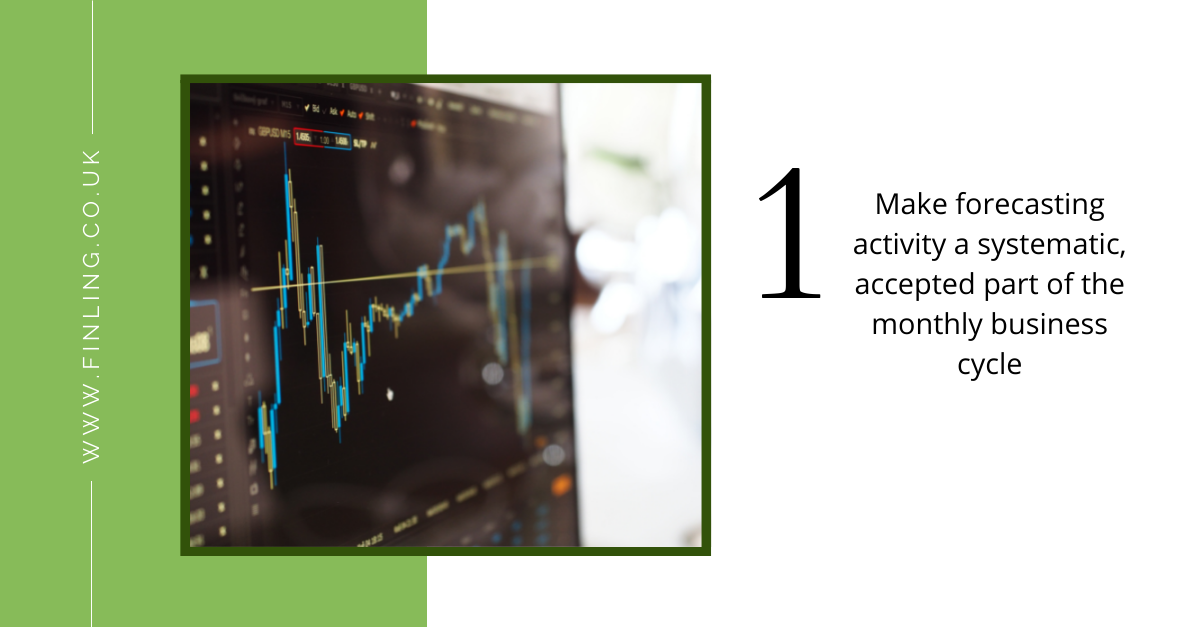How to get the most out of a forecasting programme: 1/4 Forecasting as a Process
Over the past year, we have done an unusually large amount of forecasting work at Finling, no doubt because of the pandemic. So, I have taken a moment to reflect on the role that forecasting plays in business and the best way to implement an effective programme.
Today I will focus on forecasting as a continuous process. This is the first segment in a series on forecasting and future newsletters will touch on different methods and approaches to forecasting.
Make Forecasting a Regular Process
Forecasts are better if you always have them to hand and if they get continuous attention, so, to get your forecasts working at their optimum potential, its worth making them regular, rather than a one-off task.
Often, people start with forecasting because someone else needs information (whether that’s the bank, or an investor), or a big worry has turned up (Covid-19 being the obvious recent one). So, a forecast is drawn up, but this can take a while to do (forecast set-up is always a fair bit of effort) and, usually, it involves a lot of personal input from one or two people in the business.
And then what happens?
Well, the immediate requirement is met: the bank grants the loan, the investor invests, you manage the worrying situation (at least for the time being!). But that’s it; oftentimes you don’t look at the forecast ever again and it falls out of context.
So, all told, your effort has actually only delivered one, short term result. But it could have provided the foundation upon which you build a regularly updated, increasingly accurate forecast that you can use to manage your business all of the time.
By making your forecasting activity a systematic, accepted part of the monthly business cycle, you can:
Have a business that is much better prepared to weather the ups and downs of the economic cycle
Get a really sharp and useful window on to the future
Delegate parts of the work in order to reduce the personal burden of effort and time
Make your forecast more and more accurate and intelligent as you use the learning from each month
Top Tips
The most important part of your forecast is the revenue forecast
Get the sales and marketing team involved
Use the data you already have in your accounts to inform the forecast (deferred revenue, repeating invoices, draft invoices, quotes issued)
The next most important part is probably the pay forecast, so keep that regularly updated too
You can either do all of this yourself, or you can collaborate:
with your finance team, who can build and maintain the model, and ensure the process is fully completed each month
with your sales team to update the sales pipeline
with your various departmental managers who can tell you about any major cost changes
with Finling, if you want to tap into our deep expertise in planning and forecasting!

